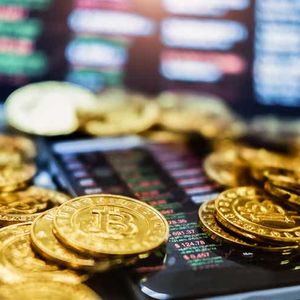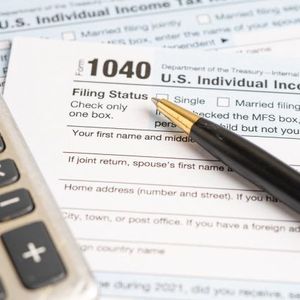Summary A well-defined macro view is crucial, but holding the right asset is more important for portfolio success in uncertain economic conditions. The hard-landing thesis is supported by positive real rates, declining savings rates, and traditional recession indicators like yield curve inversion. Gold and Bitcoin are recommended for their potential to perform well in both soft and hard landing scenarios, despite Bitcoin's volatility. Bitcoin offers unique convexity potential, acting as both a store of value and a tech asset, making it an all-weather play. Periodically, I write about macro. Early on in my investment career, I discovered the wonders of being a stock investor with a well-defined macro view. The main problem is the ability to sustain a well-calibrated macro view. Only periodically have I been capable of holding a high-conviction macro thesis that I feel confident enough to use to scale my position size. Nevertheless, more important than having the right thesis is holding the right asset. It all boils down to having the right portfolio. The investment world now seems divided between two fiercely competing theses: soft-landing and hard-landing. The hard landing thesis seems to have lost some luster since 2023. Yahoo Finance It has been like this for a long time; it has been so recurrent that it doesn't feel like déjà vu anymore, it just feels like another “Friends” episode. At times, investors have been confronted with this fork in the road, and having counted myself among the hard-landing crowd a few times, I can hear myself being a bit of a broken record throwing out reasons for a recession. However, also knowing that I have been wrong a couple of times in the past and that my portfolio performance suffered, I have to ask myself if there isn't an all-weather asset that can help me avoid the losses of being wrong. In other words, can I pick the wrong thesis and still make money? I think we can pick the asset that fits, but to get there we need to revisit historical patterns. Hard-landing thesis For now, let's take a step back and go through the current possibilities. The hard-landing thesis is perhaps the best documented. A bit like the pursuit of the holy grail, it has attracted the sharpest and most adventurous minds to the fold. Therefore, the case is very well-supported with data points that make a compelling argument. One of the most important aspects to consider is that we are now in positive real rates territory. Positive real rates have been a rare beast in the last 25 years, and almost every time they have been with us for a prolonged period, it has ended in recession. FRED One way I tend to look at this is by adding the savings rate. When real interest rates become positive, available income will drop, and it will likely be compensated by savings consumption. If the tightening cycle is not too destructive, the economy might bear it well. The 1990s is a good example of a decade when real rates trended higher in the first half, with the savings rate dropping steadily. By 1995, real rates started trending lower until 1997, when they resumed, with a new inflection point at the end of 1998. The savings rate kept dropping and bottomed in 2000, just before the recession. FRED A similar analysis can be done for the period ending with the 2008 recession, while the following period, until 2023, was mostly characterized by negative real rates and stable savings rates. The helicopter money of 2020/21 blurs the analysis for the current period. Nevertheless, we are in a tightening period in terms of real rates since 2022, when the rate tightening cycle started. Savings rates are now lower than in 2019, and they seem to be trending lower in 2024. If we factor in the unemployment and apply the Sahm rule, we get the alert that we might be close to a recession or even already be in one. FRED We can look at other popular recession indicators like the inversion of the yield curve, which is uninverting like it does right before a recession. FRED The case is very clear in favor of a recession, with several traditional recession detection metrics flashing red or orange, but, as always, not every single metric is aligned with this view. Soft-landing thesis For me to be completely convinced that the recession is inevitable, I would need to see the insides of the stock market reflecting this. I would need to see cyclicals underperforming defensives. Seeking Alpha Looking at the performance of the various sectors of the S&P 500, we can see that the worst performers in the last month were defensives like Healthcare ( XLV ) and Consumer Staples (XLP). During the last year, the best performers were Technology ( XLK ) and Financials (XLF). While the worst performers were Healthcare and Energy (XLE). This does not suggest a recession. In the past, for instance, the Consumer Discretionary ( XLY ) peaked way ahead of the recession. Seeking Alpha The fact that we presently lack these cues may have two distinct meanings: Either the recession was cancelled, or the equity market is deeply wrong. One decade ago, it was common to hear that the bond market was the smart money, however, fast forward to the present and with all the bond buying from central banks, we cannot be sure that the bond price action carries the same signal . Investment action I think the most likely thesis is that the hard landing is coming. Nevertheless, we have laid out several data points that indicate weakness in both the soft and hard landing scenarios. For instance, although Consumer Discretionary is still strong, it has not surpassed its 2021 peak, and it has underperformed Healthcare since pre-Covid. Seeking Alpha This makes me believe that in both scenarios, the Fed will be dovish. In a hard landing, it will use the same playbook as 2008. However, in a soft landing, the Fed is also likely to try to support the labor market and consumers. Therefore, the end game seems like more liquidity in either case. The best asset to own going into a recession will be Gold (GLD). The liquidity injected into the system will be reflected in gold prices rapidly. But understand that in these moments, markets will also test the soft landing thesis. You will likely see the most cherished names in equity land trying to rally. Below, I also included Louis Vuitton (LVMUY). As you can see, it went up even faster than gold. Later on, the moments of acute collateral shortages brought everything back, even gold gave some of the gains back. Nevertheless, gold still outperformed bonds like the iShares 3-7 Year Treasury Bond ETF ( IEI ) in 2008. Seeking Alpha What assets will perform well in the soft landing? Equities are likely to perform well in the soft landing. The Fed will ease somewhat more in order to reach a neutral rate, and that should be good for consumers and equity prices. In that scenario, we should see the S&P 500 resume its grinding higher, and Discretionary Staples should also break to new highs. Therefore, gold investors basically risk a soft-landing scenario where gold still performs well, but the most cherished names in equity land outperform it. Is there any way to get some convexity? I think so, with Bitcoin (BTC-USD). It's very hard to provide a short, detailed description of what Bitcoin is. It is many things to many folks. But I dare cite Paul Tudor Jones' letter on Bitcoin from 2020. There, PDT argued that Bitcoin is a store of value and benchmarked it against other available assets. Paul Tudor Jones & Lorenzo Giorgianni Letter, 2020 Although it comes last, for PDT, the surprising factor was that it ranked at close to 70% of gold's score, while it has a fraction of gold's market capitalization. In his assessment, he included four main dimensions: Purchasing power – the ability to retain value; Trustworthiness – universal trust as a store of value; Liquidity – the ability to convert to common currencies; and Portability – the ability to move the asset geographically. I believe that if the assessment were to be conducted now, the score would be much higher. The ETFs have added additional bandwidth that now allows institutions to onboard very fast. They are also contributing to reinforcing the whole infrastructure by pressuring the SEC to make regulatory decisions, bringing big players in, e.g., JPMorgan (JPM), and allowing companies like Coinbase ( COIN ) to add more offerings. Looking at Bitcoin's behavior during the initial Covid months, we can see that it started to move up as it became evident that some intervention would be necessary. In my view, the market was operating on a soft landing thesis. However, when we got to March and lockdowns became a reality (hard landing), credit markets freaked out, there were collateral shortages, and people liquidated in panic. Almost every asset suffered, but Bitcoin suffered much more. However, as the stimulus was unleashed in size, Bitcoin came back to surpass every other asset. Seeking Alpha Risks The previous chart encapsulates the main advantages and risks of using Bitcoin in the present scenario. It might outperform in both soft landing and hard landing but will likely do so with huge volatility. In weeks of collateral shortages, it will likely be the asset of choice to be liquidated to meet margin calls, just like what happened in 2020. Imagine holding Bitcoin in February 2020; could you ride it out? It is a tough question. Additionally, there will be periods when it might underperform equities. In the previous chart, we see that in July 2020, as investors were loading up on risk assets, Bitcoin was underperforming Apple massively. Could investors ride it out without the fear of missing out? I really doubt it. The main issue for Bitcoin investors will be to stick to the plan when dealing with long weeks of violent moves. Another risk is how to implement this strategy. I am bullish on the spot product, but buying spot and storing it is not for everyone, and it is beyond the scope of this piece to explain how to do it. There are solutions like buying it on the exchanges and keeping it there (not really Bitcoin, more like an IOU). Or buying the ETF and dealing with tracking error and ETF-related risks (e.g., custody, fraud). There is also the risk of Bitcoin simply failing technically, or failing to become universally seen as a store of value. Finally, my scenarios do not contemplate a sudden need to tighten monetary conditions. If such a scenario materializes, I believe Bitcoin will underperform massively, as it did in 2022. This is the major weak spot in my investment rationale. Deep Dive on Bitcoin Let's now move to a more granular analysis of Bitcoin that can shed more light on Bitcoin itself and help us see where it stands right now on more granular metrics. Right now, the corrections from local peaks are compatible with previous bull markets, when Bitcoin had violent pullbacks in notable previous uptrends. Therefore, the current fractal has similarities with the previous bull runs. Glassnode A more fundamental way to look at these supply and demand dynamics is to consider the average cost of active investors. We can look at the active investor price, which now stands at $52.5k . The spot price has been trading significantly above that level. That is a sign that the potential supply is comfortably in the money and may take its time before rushing to sell. Ignoring all the noise from market commentators, we can see that the CPI has been trending lower. Bitcoin investors are very liquidity-sensitive and will try to front-run interest rate cuts and easing financial conditions. With Bitcoin now printing a series of higher highs and higher lows since March, we might be witnessing the change in sentiment that sets in motion a breakout. Tradingview Finally, there is Bitcoin's MVRV Z-score, a metric used to measure Bitcoin's value by comparing its market value to its realized value—the realized value being the value at the last time each bitcoin was moved on-chain. Like traditional valuation metrics, this gives us insight into whether the market is overvalued or not. A high MVRV suggests that investors deep in the money might eventually balance the price by increasing supply, creating a price top. A low MVRV implies exactly the opposite. Currently, the MVRV Z-score shows we are far from the high levels that mark tops, and this, together with the previous data, is compatible with a constructive scenario. Where might this lead us? Coinglass At this point, I think the value potential for Bitcoin can be best summarized by VanEck's CEO, who suggested that it could reach half of gold's market capitalization, which would translate to a price target of $350,000 . This might seem ambitious, but we're not even considering the possibility of adoption by Central Banks. Conclusion Bitcoin has the potential to perform well in both soft and hard landing scenarios, and it will have movements of violent reversals that might drive investors mad. There is one reason for that: Bitcoin has features that make it similar to gold but also has features that make it akin to a tech stock. Therefore, markets will at times use it as a store of value similar to gold; other times, this will be supercharged by the fact that it is a technology being adopted at a fast pace. Conversely, sometimes the opposite will happen: investors will recognize the risk of Bitcoin being a failed technological attempt to emulate gold, and they will dump it to stabilize portfolios. We have covered it all. I think Bitcoin, at this juncture, has enough convexity potential to make it an all-weather play – one of those that seldom appears. However, that does not mean you won't get wet if it rains.














